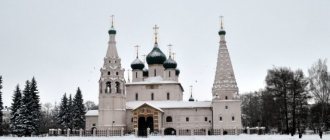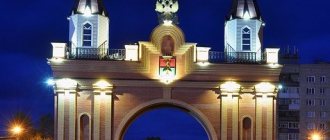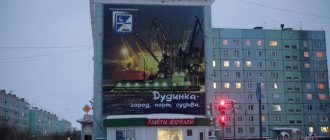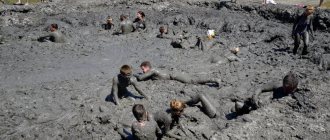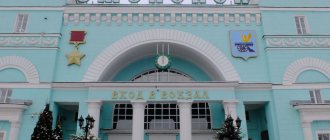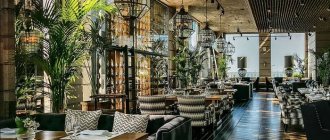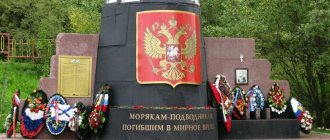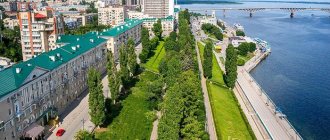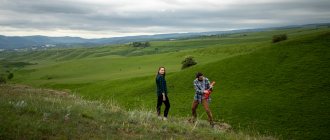Grodno is one of the most beautiful cities in Belarus, located on the banks of the Neman. The first mention of Grodno in chronicles dates back to the 11th century. At different periods of its history, it was part of the Polish-Lithuanian Commonwealth, the Russian Empire and the USSR, having absorbed the history and culture of these states.
You can get to Grodno by rail. It goes back and forth from Moscow and St. Petersburg. Grodno also has its own international airport, where you can fly from all over the world, with or without transfers. Bus service is developed throughout the country.
What to see in Grodno on your own: TOP 5 places
It is impossible to explore the entire city of Grodno in one day. But there are several attractions that will help you see it from all sides. They are the ones that are recommended to visit first on excursions.
Cathedral of Saint Francis Xavier
- Address: pl. Sovetskaya, 4.
The Catholic Cathedral in the very center of the city was once part of the richest and, probably, the most ancient Jesuit monastery of the Polish-Lithuanian Commonwealth. Since the 19th century, a prison was built in the monastery, and the collegium building, built in 1705, was turned into a cathedral. Today it is called one of the main decorations of Grodno.
It is impossible to pass by him. Even from the outside, the cathedral building amazes the imagination with its bell towers supporting the heavens. Their height is 65 m, and the clock on one of the towers is considered the oldest not only in Belarus, but throughout Eastern Europe. According to the assurances of the craftsmen who participated in its restoration, the mechanism of this watch is unique. These were made back in the 13th century. An elegant two-flight staircase leads inside the cathedral, which is crowned with the figure of Christ carrying a cross.
The interior of the temple is more reminiscent of a museum. Here you can see a grandiose combination of plastic arts, painting, and sculpture. All 13 altars of the cathedral look like works of art, but the most important of them - Baroque, 18th century - is especially beautiful. Carved, consisting of three tiers of columns and pilasters, it brings trembling delight to the souls of believers.
It is decorated with more than 40 sculptures depicting saints and apostles. It is also considered one of the highest altars in Europe, its height is about 21 m. The walls and domes of the frame are decorated with picturesque frescoes depicting biblical scenes. Between the columns you can see wooden carved iconostases. The design is dominated by gilding.
The Cathedral is rightfully considered one of the world's masterpieces of the Baroque style. This is not only an architectural and historical monument, but also one of several Belarusian churches that has been awarded the honorary title of Minor Basilica.
Boris and Gleb Church
- Address: Kolozha street, 6.
This ancient church on the banks of the Neman is a monument of ancient Russian black architecture. The date of its construction is given in different years of the 10th century. Its ancient name - Kolozha - according to one version, comes from the name of the tract revered by pagans, on the site of which it was built. According to the second version, this was the name of the Pskov fortress, the inhabitants of which were captured by Prince Vitovt and settled not far from the ancient church.
Throughout the history of its existence, the Boris and Gleb Church has been repeatedly attacked and destroyed. In the 13th century it was the crusaders, in the 15th century it was the soldiers of Ivan III, who covered it with sand during the Russian-Lithuanian war to install cannons. The location of the temple also contributed to the destruction.
River waves constantly washed away the steep bank. As a result, the soil began to slide, taking with it part of the walls and windows of Kolozha. Today the church is active. Two years ago, a partial reconstruction was carried out, as a result of which the original frame remained, but the internal lining was replaced. The floor has become glass, and visitors can now see the remains of support pillars through it.
The unique architecture of the church has virtually no analogues in the modern world. This cross-domed temple was built from plinths - rectangular white bricks that were used for construction by the inhabitants of Ancient Greece and Rome. So-called voice jugs are built into the walls - these small vessels were designed to increase the acoustic power of the room during services.
The outer façade of the church is of great interest to architects. It retains inserts of decorative smooth granite of different colors. The floor is decorated with majolica patterns, and when the church was restored in 1870, the walls were decorated with ancient frescoes.
old lock
- Address: Zamkovaya, 2.
One of the most ancient architectural monuments on the territory of Belarus, the residence of Polish kings and Lithuanian princes, one of two surviving royal castles in the country. Here destinies were decided and important decisions were made that in one way or another affected 4 nations: Lithuanians, Poles, Ukrainians and Belarusians.
The stone castle with five towers, such as we see it now, appeared only in the 12th century - during the reign of the Lithuanian prince Vytautas. Before this, there was an ancient Russian detinets on its territory. First wooden, then stone, it served as the main residence of the Grodno princes from the 11th century.
Casimir IV Jagiellonczyk accepted the Polish crown in this castle, and here he died. During the time of Stefan Batory, who loved this castle very much, Grodno received the special status of an unofficial capital. Under him, the castle was rebuilt in the style of Mannerism, which was gaining popularity at that time.
During the Northern War he suffered a sad fate. It was burned, and after reconstruction it was no longer used as a castle. After the division of the Polish-Lithuanian Commonwealth, a prison was located here, and from Soviet times to the present day - the Grodno Archaeological and Historical Museum.
New castle
- Address: Zamkovaya, 22.
This is a new royal residence, built already in the 18th century opposite the Old Castle. Augustus III built it as a summer castle and a place for holding general diets, so it was divided into two parts: royal chambers and meeting rooms.
Here the three countries signed an agreement on the division of the Polish-Lithuanian Commonwealth, and Stanislav Poniatowski signed his abdication. After this, the castle lost its original purpose, and a hospital and soldiers’ barracks were built within its walls.
The modern new castle has nothing in common with the one that burned down during the Second World War. In 1952, it was rebuilt, but acquired the appearance characteristic of buildings of that era. For some time the regional committee of the CPSU was located there, then part of the exhibitions of the archaeological and historical museum were placed there, which can still be seen today:
- History of the New Castle,
- The amazing world of nature,
- Weapons of past centuries,
- Sacred values.
One of the halls often hosts traveling exhibitions. In 1994, a memorial plaque appeared on one of the castle walls in memory of the 1974 uprising led by T. Kosciuszko.
Gilibert Park
- Address: 1st May Street.
The park is located on the site of a former botanical garden founded by Jean Emmanuel Gilibert, a French physician and scientist. With his help, the Medical Academy was founded - the first higher institution in Belarus, a school for midwives and a hospital.
The year of foundation of the botanical garden is considered to be 1775. It collected about 2,000 plant species, many of which were considered quite rare. Initially, students of the academy practiced there, but very soon it gained fame as the best botanical garden in Europe.
After Gilibert's departure, the city authorities were unable to cope with the maintenance and the garden began to fall into disrepair. It was decided to divide it into several parts: two parks and a garden. And in 1920, Jan Kochanowski decided to recreate the botanical garden, which already had several times fewer plants than its predecessor.
During the war, soldiers were buried on its territory, and after the end, the remains were transferred to a common mass grave, which today is crowned by the Eternal Flame. And although the park is no longer what it was in Gilibert’s time, it never ceases to amaze with its beauty and remains one of the most popular places in Grodno. Here you can independently walk along the green alleys, relax on the numerous benches installed along the paths, admire the plants and waterfalls, and breathe in the clean, fresh air.
In the summer, there are cafes and children's attractions in the park. And at the entrance, every visitor is greeted by a sculpture of Doctor Gilibert, installed by grateful citizens for his contribution to the development of the city.
New castle
Another equally interesting object of historical significance in Grodno is the New Castle, built back in the 18th century. The palace was erected so that the Polish and Lithuanian kings could spend their leisure time there; later, the most important agreement in history was concluded here, allowing the division of the state known throughout the world as the “Rzeczpospolita” between Prussia and Russia.
New castle
Unfortunately, the walls of the original New Castle were damaged during the war in 1944, and therefore, 8 years after the fire, the royal palace was partially rebuilt. Since then, the landmark has been one of the most visited places for tourists coming to Grodno - the beautiful territory, exhibitions and the opportunity to plunge into the past attract thousands of people here every year.
For reference:
- Address: Zamkovaya street, 20.
- Opening hours: Tuesday-Sunday – from 10:00 to 18:00; Monday is a day off.
- Ticket price: from 2 to 5 dollars; a system of discounts is provided for pensioners and students of educational institutions.
Grodno churches and monasteries
Religion has always occupied and occupies one of the main places in the life of the city. In Grodno, churches of different faiths stand next to each other, and pilgrims from different countries come to touch the shrines.
Holy Intercession Cathedral
- Address: Ozheshko street, 23.
It was built at the beginning of the 20th century in memory of the officers killed in the Russian-Japanese War. The prototype for it was the regimental church of the Caspian Infantry Regiment in Peterhof, and thanks to the art of the military engineer I. Savelyev, the temple acquired special features inherent only to it.
The garrison temple complex managed not only to survive the maelstrom of events that abounded in the 20th century, but also to become a Cathedral complex. Even during the fascist occupation, prayers and services were held here weekly.
The appearance of the cathedral resembles a tower in the neo-Russian style, decorated with candle bell towers and dome crowns. And the decorative elements decorating the outside of the temple were widespread in ancient Russian architecture. Due to this mixture of styles, it looks especially majestic.
The interior decoration is dominated by wood, and the space of the cathedral is divided into three parts by arcaded columns. The ceiling is decorated with ancient Russian script, the walls are painted, and the floor is covered with tiles with intricate patterns. The iconostasis and altar are made of wood, tinted brown and covered with gilding.
The cathedral houses one of the main shrines of the Christian world - the icon of the Kazan Mother of God. During the First World War, they wanted to take her out of the temple and hide her in the Russian outback, but they couldn’t even move her. It is believed that it was she who protected the temple in troubled times. Here you can also venerate particles of the relics of the infant martyr Gabriel, Nicholas the Wonderworker and some Belarusian saints.
Franciscan Church
- Address: Ogorodnaya, 2.
Initially, it was a Catholic monastery complex, which was built on the left bank of the Neman by Evstachy Kurch and his wife in 1635. But, being wooden, it was destroyed during the Russian-Polish war. And in 1660, the construction of a new stone monastery began with money donated by the governor Mikhail Pats and the sub-capital Gideon Khlyadovitsky.
The new complex was surrounded by a fence with a gate and included a small church, a residential building and a bell tower. In 1759 it was rebuilt again after a fire befell it.
From the middle of the 19th century, the monastery was closed, and after the Polish uprising it was used as a prison for clergy until 1919. Then the building was returned to the Franciscan monks, and it still belongs to them.
This three-nave basilica evokes admiration at first sight. The Baroque style decoration is replete with many decorative elements, cornices, and pilasters. Inside, the church amazes with its luxury, achieved through a combination of architectural plasticity, painting, and modeling.
Antique icons, a carved altar screen in the Rococo style, decorated with gilded vases and busts, paintings, icons, including the Mother of God of Czestochowa and the miraculous Mother of God of the Angels - the main shrine of the monastery. An organ was installed here at the end of the 18th century, which is the oldest in Belarus. It was built in Prussia and cost more than 3.5 thousand zlotys.
Lower Church
- Address: Zamkovaya, 22.
This church was discovered in 1932 during excavation work on the territory of the Grodno Detinets and today is considered the oldest Christian church in Belarus. The date of its construction is unknown for certain, approximately 1150-1175, but all historians call the date of destruction 1183.
It was then, according to the Ipatiev Chronicle, that a fire occurred in Grodno in which the temple burned down. Later, its walls were covered with sand and during the reign of Vytautas, a new, Upper, church in the Gothic style was built on this site. Today, the lower temple is covered with a pavilion and is included in the exhibition of the archaeological and historical museum.
Great Choral Synagogue
- Address: Bolshaya Troitskaya, 59A.
Throughout the history of its existence, the Grodno synagogue was accompanied by fires. The very first, wooden one, was built by the Jewish community at the end of the 16th century. To do this, she had to take special permission from the Lithuanian Prince Vytautas. In 1575, a stone one was erected according to the design of the Italian architect Santi Gucci, but already in 1617 it was completely destroyed by fire.
Soon Sigismund III gave permission to build a new synagogue on the same site. But she didn’t last long either. In 1899, she repeated the fate of her predecessors. The modern synagogue was built in 1905 by the architect I. Frumkin, who used the remains of old walls, introducing elements of the Moorish style into them.
During the Holocaust, the building served as a collection point for Jews before being sent to concentration camps and gas chambers; after the war, it was used as a warehouse and workshops. And only in 1991 the Jewish community was able to regain the shrine. During this time, not only the appearance of the building suffered, but also the interior decoration.
But even despite this, the synagogue continues to amaze with its grandeur and leave a mark on the souls of people of different religions. Today, restoration work is underway and there is a museum of the history of the Jewish community of the Grodno region.
Cathedral of St. Francis Xavier
A traveler who enjoys studying religion and the corresponding abodes of different peoples is simply obliged to pay attention to the next holy place - the Cathedral of Francis Xavier. Like the previous church, this church welcomes Catholics within its walls, of whom, it is worth noting, there are quite a few in Grodno.
Cathedral of St. Francis Xavier
The architectural structure in the Baroque style was erected 4 centuries ago and was considered one of the richest monasteries of the Polish-Lithuanian Commonwealth; at present, the cathedral is still in operation and delights parishioners and pilgrims who come to the holy place from different parts of the world. Inside the walls of the church there is an ancient altar composition made of wood. It is known for certain that such an important detail of the temple was created in 1736. In addition to the main shrine, the church contains 12 more altars glorifying the Great Martyrs and Saviors. The architecture, frescoes and paintings of the Francis Xavier Cathedral will not leave indifferent any person who decides to visit the temple.
For reference:
- Address: Sovetskaya Square, 4.
- Opening hours: 24 hours a day.
- Cost of visit: no fixed cost, voluntary donations are welcome.
The most interesting museums and exhibitions in Grodno
The history of Grodno has been going on for 11 centuries and, as the preserved historical part of the city shows, it was extremely eventful. While still part of the Principality of Lithuania, it became one of the main religious centers of Eastern Europe, which left a mark on its modern appearance. But today Grodno is not only the largest concentration of shrines and temples in Belarus. It contains many unique and unusual museums, which also open the historical curtain. There are also exhibitions here that will be interesting for the whole family to visit.
Iron Museum
- Address: Sovetskaya street, 7.
The creator of this museum is looking all over the world for interesting, rare irons. Why them? Yes, because few people would think of it, and the idea is simply wonderful. Collect so many items intended for smoothing fabric in one place.
Here there are large ones - charcoal for thick fabrics, and small ones - for lace and thin cambric, elegant works of art and rough ones - carved from wood. Each of them has its own purpose. There are very small irons that were used only for smoothing out wrinkles.
Irons brought from other countries have a wide variety of shapes. For example, looking at a round frying pan, you would never guess that it is an Indian relative of the charcoal iron. Some run on alcohol, such as the American ones from the 19th century.
Among the exhibits you can also find the great-grandfather of the modern electric iron - the electric arc iron, which had many shortcomings. It was necessary to work with him carefully, because he could give an electric shock, even to death.
The number of copies is constantly being replenished, negotiations are underway with private collectors, some exhibits are donated by residents of Grodno and other cities. The iron museum is the only one on the territory of Belarus; it has no analogues.
Museum of the History of Religion
- Address: Zamkovaya street, 16.
If there should be a museum of religion, it should only be in Grodno. After all, in this city there are so many representatives of different faiths, trends, and cults that it’s even impossible to imagine. Each religion has given something of its own to this museum, so its uniqueness is obvious. Moreover, on the territory of Belarus, it is the only one of its kind.
The museum has both permanent and temporary exhibitions located in different places. For example, Jewish religion and culture can be studied at the Great Choral Synagogue. But the main collection is located in a historical building - the former Khreptovich Palace. The number of exhibits is approaching 100 thousand units.
Among them there are exhibitions dedicated to angels, Easter eggs, ancient cults of idolaters, and the culture of past centuries. Here you can find not only religious objects, but also coins, stamps, and art objects. A tour of the museum will bring pleasure to both believers and people far from religion.
Grodno Kunstkamera
- Address: Karl Marx, 1.
This is a big word for the small museum of teratology, located in the Batoryevka Palace. It is not particularly interesting to the general public, but horror buffs and medical professionals will find the exhibits quite entertaining and worth exploring.
Here, various human deformities are preserved in glass jars. Among them you can find a baby with two heads, undivided Siamese twins, a frog child, and organs affected by diseases.
The most valuable exhibits were taken to St. Petersburg, but what remained causes mixed feelings. Disgust, because it is impossible to look at it differently, and admiration, because in our time most of these pathologies have already been studied and defeated.
House-Museum of Eliza Ozheshko
- Address: Ozheshko street, 17.
We are talking about another Grodno museum that attracts tourists. It is located in the house into which the writer Eliza Ozheshko moved in in 1894. She lived here for the last 16 years of her life. Today there is a unique exhibition here, telling about a cultural figure who is respected by both Poles and Belarusians. Paintings and herbariums, furniture from past years, photographs and a large collection of books - all this can be seen here.
Museum of History and Life
- Address: Lermontova, 25.
It is difficult to call this interesting place a museum - there is no clear systematization of the objects on display. At the same time, extraordinary exhibitions always attract the attention of visitors. The collection on display is an exhibition assembled by the hands of one person, who conducts a tour of the attraction. Among the items that can be viewed here are historical photographs, books, antiques and much more.
old lock
While exploring Belarusian attractions, be sure to plan a visit to the Old Castle in Grodno - an outstanding building is directly related to the Grand Duchy of Lithuania and was built 10 centuries ago.
old lock
For several centuries, the military bastion was the main defensive fortress of the city, but only some fragments of the “original” structure have survived to this day. Over the many post-war years, the ancient castle was restored at least twice - unfortunately, the restorers were unable to preserve the original architecture of the fortress. Nevertheless, the attraction is very popular among travelers - there is a museum inside the building; 51 years ago, the palace was declared a historical and archaeological reserve of the country. Several times a year, exhibitions dedicated to the history of Belarus are held in the Old Castle; both citizens and guests from different parts of the world come to the events with pleasure.
For reference:
- Address: Zamkovaya street, 22.
- Opening hours: Tuesday-Sunday - from 10:00 to 18:00, Monday - closed.
- Admission price: adults – 3 dollars, for guests of school age – 2 dollars.
Grodno theaters
The theaters of Grodno cannot boast of a centuries-old history, but their fame goes far ahead. Grodno troupes are known not only in the republic, but also abroad, where they are always greeted with thunderous applause.
Drama Theater
- Address: Mostovaya, 35.
The modern building of the drama theater was built in 1984 according to the design of the architect G. Machulsky. Before that, it was located in the building of the Tiesenhausen Theater, built back in 1780. To hold performances, another floor was built there, the halls were expanded, and the stage was enlarged.
The new building, according to architectural historians, is one of the most striking representatives of Soviet modernism in Eastern Europe, although, in fact, it most closely resembles the buildings of the future from science fiction films.
The theater was built on the banks of the Neman, in the very center of Grodno, which is why such an unusual architectural solution was chosen for it, complementing the image of the “heart” of the city. The volume, increased due to the many sides and protruding vertical ribs, semicircular windows on the first floor and the sculptural composition at the entrance - all this creates the impression of some kind of unreality. And in the evenings, when the building is illuminated with multi-colored lights, it even seems like this is happening on another planet.
The theater's repertoire consists of many performances for children and adults, and often goes on tour to the countries of Eastern Europe and Russia. The acting group is a graduate and winner of many awards in theater competitions. And in 2011, for his contribution to culture, he received the title “Honored Team of the Republic of Belarus.”
Puppet show
- Address: Dzerzhinsky, 1/1.
The Grodno Puppet Theater is located today on one of the oldest theater venues in Belarus. This is the building of a former arena, which was built by the famous philanthropist A. Tiesenhausen. The date of construction of this landmark in Grodno is considered to be the end of the 18th century.
Initially, the building was too official and ascetic, but as a result of numerous reconstructions it received decorative elements that attracted attention to it. Today, the puppet theater building is one of the main pearls among the city’s attractions.
The first opening took place in 1940, but soon the war began and there was no time for performances. The troupe gathered again a year after the victory, but did not receive the title of puppet theater; it was declared as amateur. And only in 1980 the third and last discovery took place.
Since then, the puppet theater has had a permanent cast that has become a multiple laureate and winner of international theater competitions. Performances attract full houses, and tours of the Grodno puppet theater are eagerly awaited not only in other cities of Belarus, but also abroad.
general information
The city settled on the high banks of the Neman near the borders of Lithuania and Poland. Its area is the third largest among the cities of the Republic and occupies 142 sq. km. The population is more than 370 thousand people. The temperate continental climate, even during the hot summer period, does not stop the regularity of precipitation.
Modern Grodno is the largest industrial region. It includes dozens of huge enterprises that play an important role in the country's economy. Main industries: light, food, chemical, mechanical engineering, metal processing, leather and some others.
The medieval city demonstrates its European destiny to visiting travelers. Its historical breath, connected with both the past and the present, is felt at every step. And the dynamics of development are simply amazing in their pace, ahead of many cities in Belarus by an order of magnitude.
During the Great Patriotic War, many regional centers and settlements of the Republic were destroyed and burned to the ground. However, Grodno and its surroundings were preserved almost in their pre-war form. Unfortunately, some historical architectural monuments were destroyed after the invasion of the fascist horde.
The Soviet government acted as the destroyer. The year 1961 was “marked” by the explosion of the Hagia Sophia Cathedral, built at the end of the 19th century. Then the Bernardine convent was dismantled and a drama theater was built in its place. This list can be continued further, only the heartache of every city dweller will only intensify.
Architecture of Grodno: where to go and what to see
Ancient buildings are found here at every step. Each of them is unique not only in architecture, but also in the events in which these buildings were participants.
Water towers Kasia and Basya
- Address: Sverdlova, 2.
The attention of tourists is attracted to them by their unusual architecture and names. Well, where else can you find water towers named after the accountant and the caretaker (according to one version)? Now even local residents won’t say exactly which one is Kasya and which one is Basya, but this does not hinder their popularity.
Construction of the towers began at the end of the 19th century to create the city's first water supply system. Today, such towers can be seen in almost every city, but not all have a bright, memorable image. And Kasya and Basya, moreover, are standing next to each other, and not at different ends of Grodno. The first to be built was the yellow tower - a two-tier octagon with arched doors and windows.
The pink one, against the background of the “friend,” looks more elegant. There are cornices, pilasters, and even the so-called pearl belt. Local artists have placed their workshops in the towers, which are open for independent visits and will be of interest to creative individuals who come to Grodno
Fine cloth mill
- Address: Mostovaya street.
The unusual architectural ensemble in the city center amazes with its sophistication and style. This building would be more suitable for a Wedding Palace, because it is not without reason that it attracts newlyweds and lovers of all ages.
Initially it was intended for a shag factory, opened here in 1867 by the famous entrepreneur Shereshevsky. He slightly restored the Murovansky Palace standing on this site and gave it a modern look.
Later, barracks were located here, and during the period of Stalinist repressions, enemies of the people were shot in the basements of the building. The remains of these unfortunates were discovered in 2010, during the restoration and renewal of communications.
After the war, the building was given to a spinning factory, the winner of many socialist competitions, but with the collapse of the Union, the need for it disappeared. Today it houses many organizations, such as the Belarusian Institute of Law, etc., and the building itself has the status of an architectural and historical heritage.
Manor Augustovo
- Address: Repina, 2.
One of the residences of King Stanislaw Poniatowski was built according to the design of the Italian Giuseppe Santi at the end of the 18th century, but to this day only the tavern building, the chapel of Peter and Paul, and a miniature belfry (gate) have survived. The main building burned down during the First World War and the owners of the estate were forced to move to a tavern.
The Polish king used this quiet, secluded corner as a love nest, spending a lot of time here with his many favorites. After his abdication, Empress Catherine II gave the estate to Mauritius de Lacy, a general who distinguished himself in the Russian-Turkish war.
He really liked the property and began to live here permanently. During the life of the general, a family tomb in the form of a rotunda with a small chapel was built on the estate. He became its first inhabitant. Today the chapel is an active Catholic church and is named in honor of Saints Peter and Paul.
After the death of the general, the estate passed to his nephew, and then was nationalized by the Soviet government and transferred to the administration of the Agricultural Institute. In the middle of the 20th century, the estate was restored and now a Catholic church is being built on its territory.
Soviet street
When talking about the architecture of ancient Grodno, the first thing that local residents, as well as all kinds of tourist guides, have in mind is the ancient Sovetskaya Street and square in the city center, striking in its splendor and atmosphere. Stepping onto the cobblestones of the boulevard, travelers seem to be transported to the first half of the twentieth century, when there were practically no cars driving along the streets, and horse-drawn transport predominated. For many years, Sovetskaya has been a pedestrian zone, and this is where travelers staying in the city first go.
Soviet street
In addition to beautiful architectural buildings, the attraction is often involved in the celebration of important regional and national events - all kinds of fireworks, concerts, fairs, performances by street performers, etc. are organized here. If a tourist is lucky enough to get to Grodno at the beginning of summer, then it is at this time that the world-famous festival of national cultures takes place on Sovetskaya Street. The event welcomes guests once every 24 months. During the celebration, a huge number of different peoples gather in the city who want to present the culture of their ancestors to the public.
For reference:
- Address: in the historical center of Grodno.
- Entrance fee: free (during events, a separate fee may apply for entry to the territory).
Natural places in Grodno and surroundings
You can write about nature forever, especially since in the vicinity of Grodno it is truly unique. Not every city can boast so many green spaces. Thanks to this circumstance, the city has long been chosen by ecotourism lovers.
Augustow Canal
- Coordinates: 53.864674, 23.638709.
The unique hydrological monument of the 19th century is included in the UNESCO World Heritage List, and a recreational tourist area has been opened on its banks. It has a total length of more than 102 km and connects the Vistula with the Neman, thereby providing access to the Baltic and Black Seas.
Its path runs through the forests of the Augustovskaya and Grodno Pushcha, known for their cleanliness and environmental friendliness. Animals and birds have found shelter on the banks of the canal, some of them are very rare and are listed in the Red Book of Belarus. The waters, known for their crystal purity, have become a refuge for representatives of valuable fish species. And today trout and grayling prefer to breed here.
But the main purpose of the canal was tourism. The first excursions along its shore were on foot and on horseback. They began to be held in 1909. Later they began to organize boat trips, open yacht clubs, kayaking became popular and a guidebook appeared.
During the Second World War, many of the canal's hydraulic structures were destroyed and repaired only in 2006. Today it is extremely attractive for those who prefer water tourism and fishing in the Grodno region. Conditions have been created on the shore for cyclists and pedestrians.
Forest Park Pyshki
- Coordinates on the map: 53.687926, 23.785156.
Probably the best walking forest park area in Grodno. As reviews say, it’s nice to take a walk here with children, there are excellent walking paths, you can go rollerblading and cycling, admire the majestic Neman River, which flows almost right next to the park, and walk along the Health Path.
Kolozha Park
- Address: Polevaya street.
Another park in Grodno, great for walking and relaxing in the fresh air. It is located not in the surrounding area, but in the city center, which adds to its popularity. The place is very quiet, as can be seen from the responses, while nearby is Friendship Square, the Palace of Children's Creativity, the Borisoglebsky temple complex and the same notorious Old Man Neman.
Forest Park Rumlevo
- GPS coordinates: 53.657909, 23.860556.
To the southeast of the center of Grodno there is another natural attraction where you can go on a day off or just for a picnic. Visitors enter Rumlevo through the Rumlevo Bridge. Excellent conditions have been created here for relaxation - there is a beach on the Neman, there are several approaches to the river, barbecues and trails are provided.
Neman River
- Coordinates: 53.676920, 23.820881.
Of course, one cannot help but mention this landmark of Grodno, which beautifully borders the entire territory of the city and flows far beyond its surroundings. In the center, near the river banks, there are several embankments where you can take a walk, look at the surrounding beauty and marvel at the greatness of Mother Nature.
Cretaceous quarries: mountainous terrain, prehistoric sites, bicycle routes
– The origin of this place is the consequences of the movement of a large glacier, which thousands of years ago passed through the territory of the Grodno region and left behind ravines: hence such a hilly mountainous area.
Here you can look at partially landscaped quarries: these are technical reservoirs to which access is limited, but there is an observation deck from which a very beautiful view opens. The water is emerald green, and this place is also called an analogue of the Maldives.
Along the river and ravines there are a large number of Stone Age sites. And when you walk along the banks of the streams that flow into the Neman, you can find many artifacts - the fossilized remains of ancient mollusks.
In addition to all this, there are objects of the First World War: a German pillbox and the 13th fort of the Grodno fortress.
Where it is: if you go by car, you should focus on the names of the quarries - Zelenka and Sinka. If you don’t have your own transport, then you can walk directly from the Grodno station to the quarries in an hour.
Entertainment in Grodno: for children and adults
Tourists who come to Grodno with their whole family are often interested in questions: where to go with a child, what kind of children's entertainment and entertainment there is, what to visit with children. Below is a small answer to them.
Grodno Zoo
- Address: Timiryazeva, 9.
The Grodno Zoo is the first place you should visit with your child. Here you can admire both exotic species, such as panthers, and local fauna; there is a marine department where the inhabitants of the ocean depths are demonstrated. There is a contact menagerie for children. True, tourists and townspeople are advised to visit the zoo in the spring and autumn - in winter it can seem boring.
Water park "Aquacenter"
- Address: Maxim Gorky, 82.
Of course, “Aquacenter” cannot be called a full-fledged water park with all the recreational benefits that this word implies. But the pool here is really excellent, and there are also small slides for children to go into the water.
Ice Sports Palace
- Address: Kommunalnaya, 3a.
Hockey fans, and there are many of them in Belarus, as in Russia, should visit the ice rink of the Neman hockey club, a seven-time national champion. Many argue that this arena is one of the best in the entire Republic. There is also a small area for ice skating.
Boris and Gleb Church
Adherents of the Christian faith are simply obliged to get acquainted with the Boris and Gleb Church, rising on the banks of the Neman. The temple is unique in that it is officially recognized as the only “representative” of the architecture of Black Rus' that has survived to this day. The walls of the ancient cathedral may be in a dilapidated state, but it is still operational.
Boris and Gleb Church
It is not known for certain in what year the shrine was erected; the estimated period of construction of the church is the 11th-12th centuries. At the same time, the temple was named in honor of the first saints in Rus' - the Kyiv princes Gleb and Boris, the sons of the great Equal-to-the-Apostles Prince Vladimir. Over the next few centuries, the cathedral, like the banks of the Neman, was subject to raids by crusaders and barbarians, as a result of which the building was barely preserved. Now the country's government is literally dreaming of having the site included in the UNESCO heritage list.
For reference:
- Address: Kolozha street, 6.
- Opening hours: daily from 8:00 to 18:00.
- Cost of visiting: free.
Lutheran Church
While exploring the sights of Grodno, it is impossible not to pay attention to the Church of St. John, founded in 1793. The history of this architectural monument of the neo-Gothic style is fraught with a huge number of interesting facts, and the appearance of the building is literally mesmerizing with its sharp and aggressive forms.
Lutheran Church
For many years, the church was abandoned and stood in disrepair or was used as a warehouse, and in 1995 the Evangelical community in Grodno decided to restore the building. Currently, the church is fully functioning and is unofficially called “singing” - each service within its walls is accompanied by the sounds of a large mechanical organ. Not only city residents, but also a large number of travelers from different parts of the world come to worship at the Protestant church.
For reference:
- Address: Akademicheskaya street, 7.
- Opening hours: from 10:00 to 12:00 on Sundays.
- Cost of visiting: free.
Zoo
The Grodno Zoo Jan Kokhanovsko was opened almost a hundred years ago and has been welcoming visitors since 1927, constantly developing and improving living conditions for wild and exotic animals. Throughout the history of its existence, the institution has experienced ups and downs more than once, and the most difficult years were the war years - it was then that a huge number of enclosures perished. Today, the zoo has been completely restored and is considered the largest in Belarus, despite the fact that you can go to a similar institution in Vitebsk and Minsk.
Zoo
Stepping onto the paths of the facility, visitors get a unique chance to communicate with creatures that you cannot see in everyday life. Bright peacocks, pink flamingos, horned deer, mountain goats, wolves, silent reptiles, bears, camels, lions and many other animals - about 3 thousand animals, which are carefully looked after by the park staff. In addition to meeting the animals, adults get the chance to enjoy the green area, and the little ones have the chance to play on the playground. Time flies here unnoticed, and positive emotions remain in the memory for many years. Those who want to bring souvenirs from Belarus can buy small memorable trinkets in a special store on the territory of the zoo.
Important! Parents with small children should be as attentive as possible - despite the fact that the animals are fenced in safe enclosures, there are cases where children managed to “sneak through” the bars and became a target for predators.
For reference:
- Address: Timiryazeva street, 11.
- Opening hours: daily from 10:00 to 16:00.
- Admission price: adults - $2.78, children under 16 years old - $1.85.
Let's sum it up
We looked at 15 interesting places for travelers and those who don’t know what to do on a day off in Grodno. Plunging into the study of the city, it is fair to note that it is deservedly considered the unofficial cultural capital of the republic. It is here that a huge number of historical and architectural monuments have been preserved, allowing you to personally get acquainted with how our ancestors lived many centuries ago.
When planning a trip to Belarus, do not focus your attention on places you can go to yourself or take your child to in Minsk - there are many equally interesting cities in the republic that are worth visiting.

